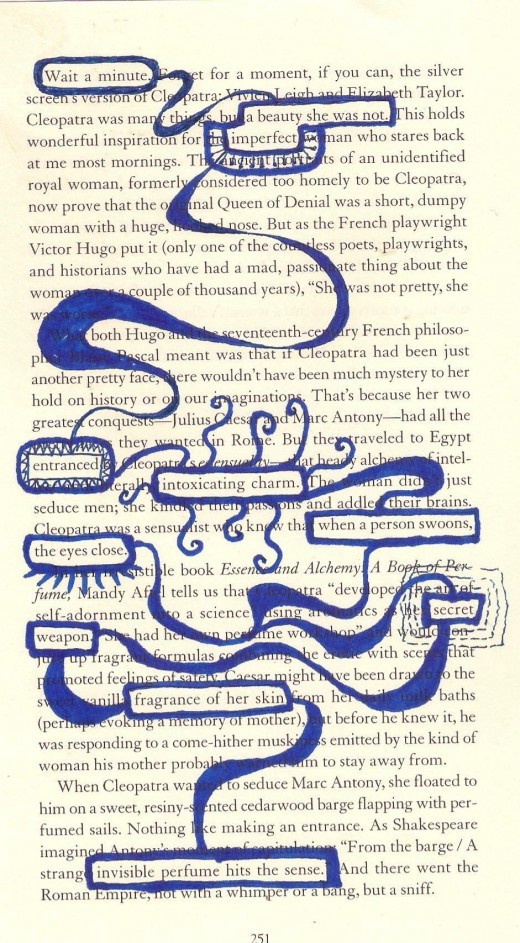


Can the human be pushed still further into the background, or even out of the picture? The author (or authors) at a minimum must do the work of a careful reader. Still, even if no one’s consciousness guided the initial creation of the constituent phrases, one or more humans will have exercised their sensitivity and discrimination in selecting the bits to include, and the way these pieces are ordered and linked to form a new whole. Examining this generative activity, it may be difficult to identify who if anyone is the “poet” who writes the found poem (or for that matter, to be confident that “writing” is an apt name for the process). To create a found poem, one or more people collect bits of text encountered anywhere at all, and with a little editing stitch the pieces together to form a collagelike poem. Not only is this an easy path to get students writing for a larger audience, but it’s also a sneaky way to get them to dig into some non-fiction/informational text while sharpening those creative minds.This article is adapted from Keith Holyoak’s book “ The Spider’s Thread: Metaphor in Mind, Brain, and Poetry“ They’ll actually “turn in” their poems by submitting them to The Learning Network blog by the May 3 deadline and then either sending me a screenshot of their entry once its posted (for security, I’ll have them submit using only their initials and the name of our town) or showing me their submission on my classroom computer during our SSR reading time on Friday. Finally, set students loose in the computer lab to read articles and build their Found Poem. Explain the contest rules, listed within the NYTimes’ Learning Network Found Poetry blog post.Ĭlick here for a printer-friendly version of the contest rules to give to your students.ħ. You could share the two source articles ( here and here), but to save time I won’t repeat the word scavenger hunt. After discussion of the “Amy” poem, project “The Sickness Man Has Spread,” another winner from last year by Luisa Rincon, and have a student volunteer read it aloud to the class: Review the answers by projecting the first page of the key to allow students to self-check once the work time is finished.ĥ. Give students two different colored highlighters or two different colored pencils and have them mark both the poem and the articles, as directed on the assignment.Ĥ. I just re-formatted everything to save paper and make the work more usable in my classroom.)Ĭlick here for my print-and-go version of the “Amy” poem assignment and articles.ģ. ( The New York Times holds all rights to this work which is located here. Give them the “Amy” poem by Epiphany Jones, one of last year’s contest winners, and a copy of the articles about singer Amy Winehouse that Jones used as source material. Have students group themselves in teams of two.Ģ. To make this work in my classroom, I’ll begin by telling my students that they have an opportunity to become internationally recognized poets by using someone else’s words. Curious what this looks like? Last year’s winning entries can be viewed by clicking here. The New York Times just launched its 8th annual Found Poetry Contest, a perfect way for us to blend high-quality informational text and creative writing.īasically, students pick and choose wording from one article or blend words/phrases from two articles to create a Found Poem of no more than 14 lines. Today, I’m adding a sixth solid (and free!) resource. Last week, I shared five easy ways to help you celebrate National Poetry Month in your classroom.


 0 kommentar(er)
0 kommentar(er)
